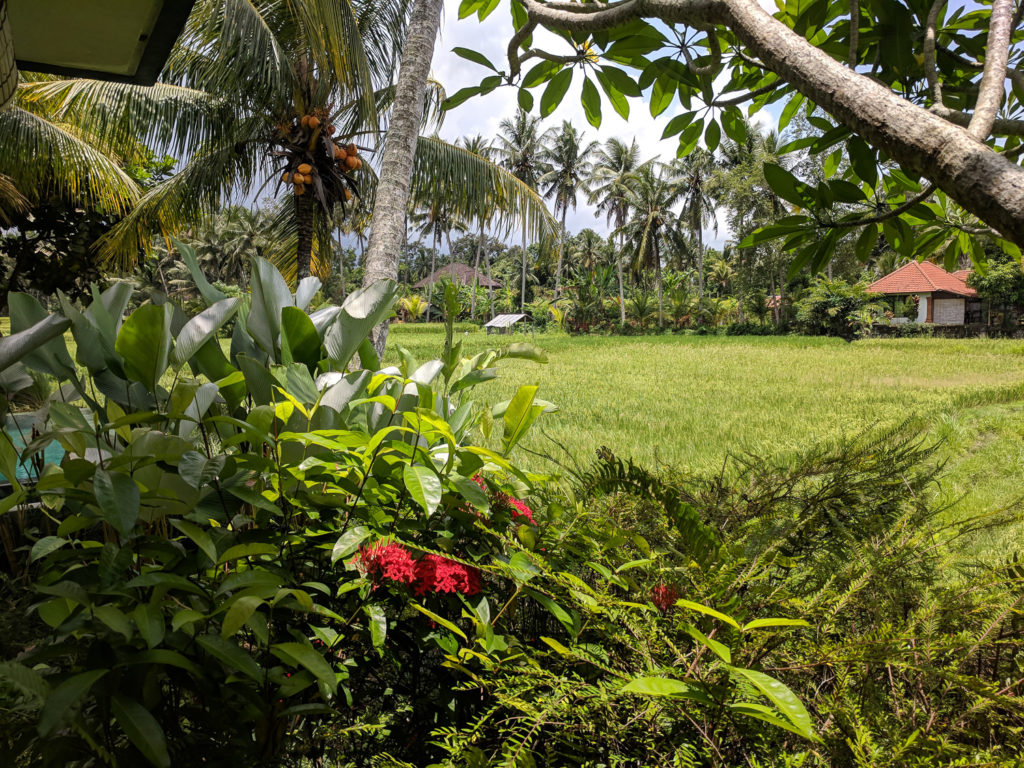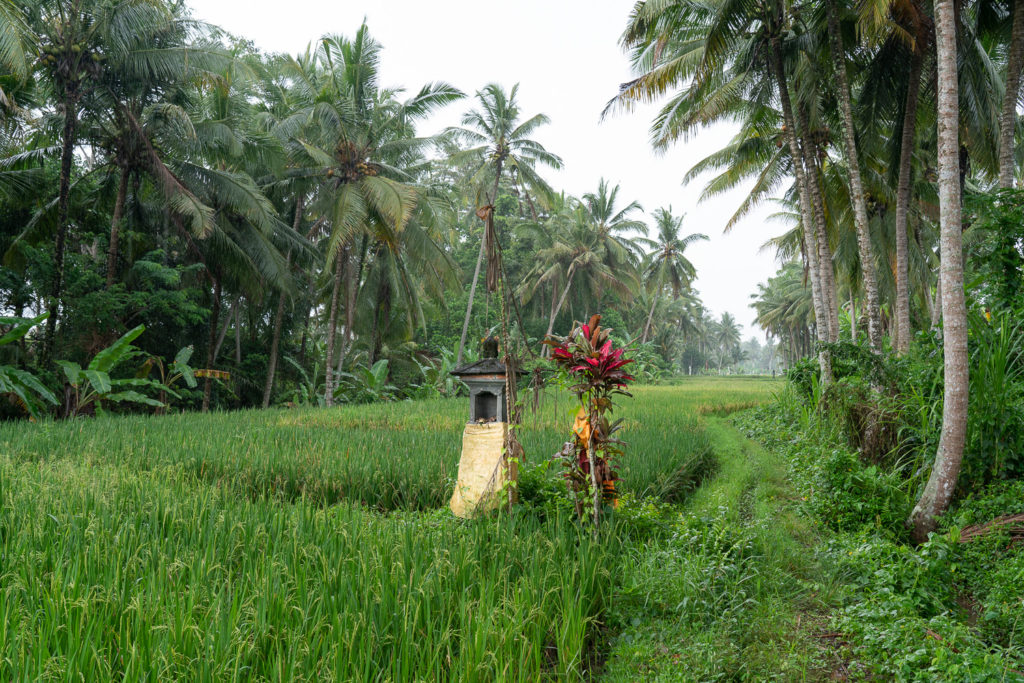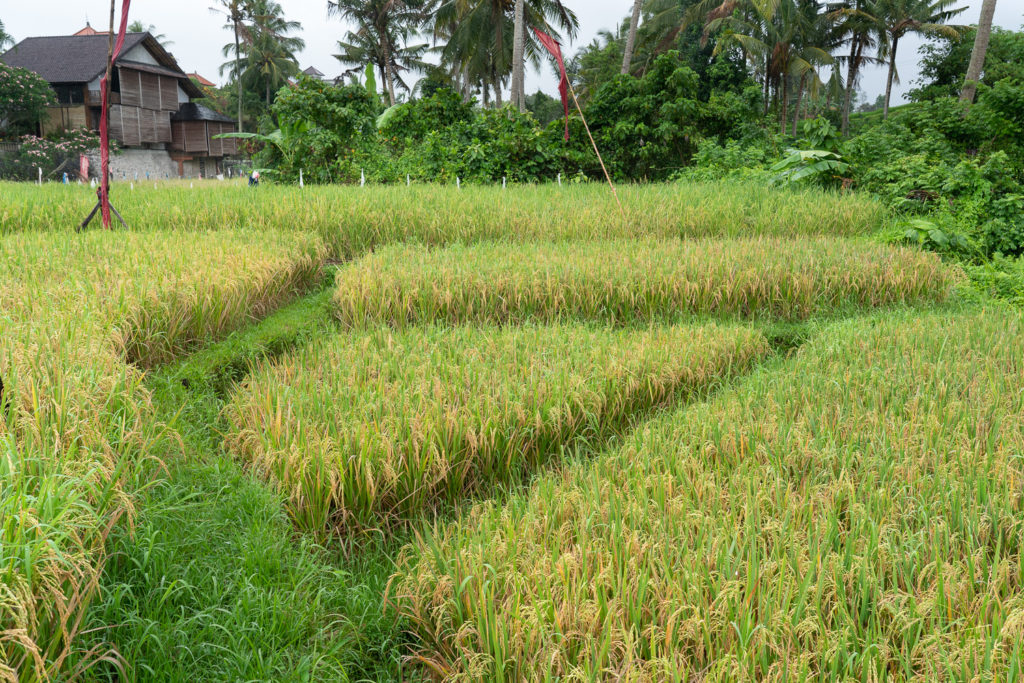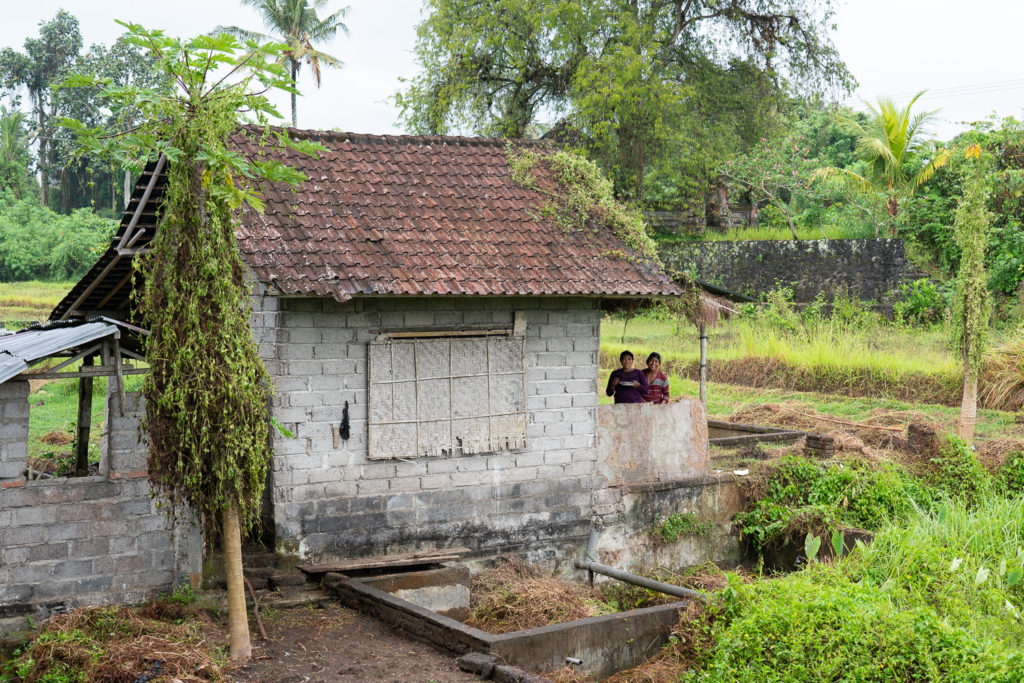Bali – A Walk Along Rice Paddies in Ubud

After two months of diving in Indonesia’s Komodo National Park for my Divemaster certification I leave Labuan Bajo, Flores and take a 1.5-hour flight on a prop plane to the island of Bali, where my return flights to the US will originate. I’ll have an afternoon and morning in Ubud, a town in Central Bali surrounded by rice paddies.
I’ve chosen a small Ubud hotel created from a residence – it sits directly on a narrow stretch of rice paddies, with a pool and grounds that frame a vista that is visual heaven. I could happily spend a long stay here, looking out at the scene and reflecting on all sorts of things – but all I have time for now is a walk along this stretch of paddies, absorbing the natural and man-made beauty of the environment. At the end of the walk I get a bonus – an invite to look through a Balinese house compound.
The paddy irrigation systems, called Subak, are managed by ancient cooperatives that maintain the irrigation canals. The cooperatives are guided by sacred values that reflect harmony between the people, their Hindu gods, and the environment. The narrow line of paddies by my hotel stretch a little over half a mile (1 kilometer) upstream and is only about 100 feet (30 meters) wide on average – with tall coconut trees lining either side. At points the paddies are less than 50 feet (15 meters) wide, giving a very intimate feel to this carefully managed landscape. I step down a little path into the paddy fields, which are 4 or 5 feet (1.5 meters) below the residence grounds, and follow one of the elevated grassy dividing paths to a temple across the way. Beyond the temple’s gate is a cluster of shrines and pavilions, with several animal sculptures. There are also small offerings that have been left, made from folded coconut leaves and flowers.
The irrigation system for these fields runs down the side of the paddies in a concrete channel at this point. Outlets regularly direct smaller streams into the individual paddies. Little shrines to the rice goddess Dewi Shri stand at the edges of the fields, with offerings placed inside. A soft rain comes down as I make my way up the paths, shielding my camera with my shell. The paddies and landscape are lush and green here, contrasting with the arid climate of Komodo, where we saw almost no rain in two months. Some fields have perimeter lines on flexible stakes. The lines are hung with strips of cloth and occasional cans, and a farmer can shake the whole line from one point to shoo the birds away from the maturing rice. I was surprised at one point by a sudden shaking and clatter next to me – and it took me a moment to locate the farmer, who was far away – very effective!
At the top end of the line of paddies the path works its way through forest and over a gorge through which water streams far below. A short distance later I pass another temple and come into a street lined with Balinese house compounds. An older woman in one of the compounds sees me through her gate and invites me in. This compound has a number of structures, including a family temple, a central open pavilion, an open-air cooking structure, and sleeping quarters. The rest of the family appears and shows me around – some of the buildings are highly decorated, and they have a koi pond with a fountain and a caged dove – beautiful!
I’d would love to come back to Bali and spend more time exploring the rice paddies, landscapes, and architecture!


























